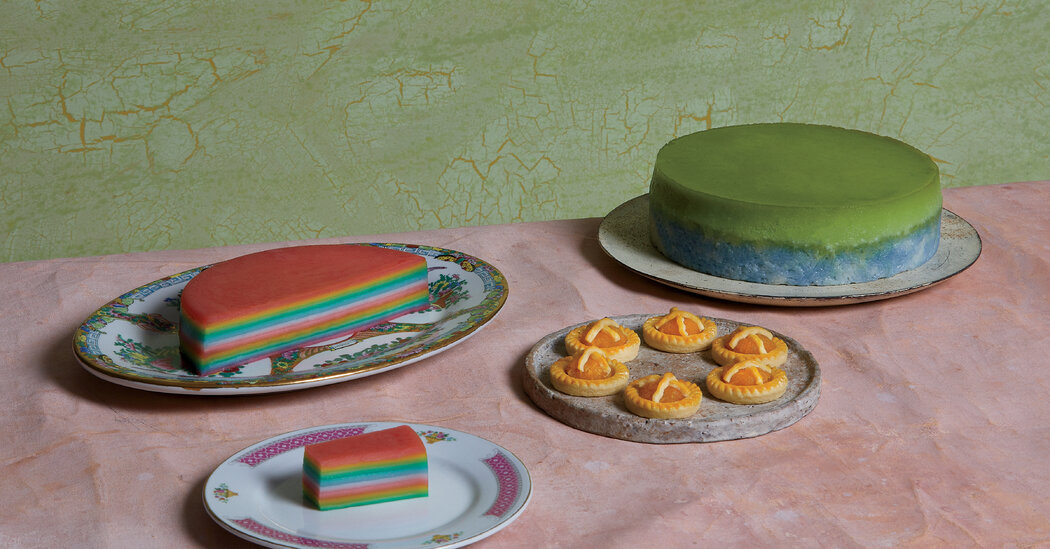“The food your grandmother cooked, that everybody cooked — suddenly it’s called something else,” Johari said. “It’s convenient for people to say, ‘It’s all shared.’ Of course it’s shared, but please give recognition where it’s due.”
AT DAWN, FROM the Southern Ridges, the city was a set of dominoes against a sky of smoked orange. A steel walkway zagged and curved through the forest, easing the way for humans. Not a leaf lay on the grating underfoot, which seemed to have been tidied by unseen hands. Cicadas shrieked steadily. The presence of nature, gently tamed, was a reminder that Singapore has almost no agriculture to speak of and must rely heavily on imports; local food is, by necessity, made with nonlocal ingredients. Nevertheless, food is one of Singapore’s defining features, another of the country’s contradictions.
How much does identity rest on the way we eat? For the Peranakans, cooking was central but, like Peranakan identity itself, not consistent, and ever evolving. The day I ate at Baba Charlie’s, Tan reminisced about a Polish sausage stew that sometimes popped up on the menu, which he’d been told was a recipe from a foreign customer. In Kampong Gelam, Johari joked that the way to make a dish Peranakan was to add pork, which Malays, who are mostly Muslim, don’t eat. But at True Blue Cuisine, near the Peranakan Museum and Fort Canning Park, the kitchen uses neither pork nor lard to be more welcoming to Muslims. A few Peranakan restaurants have even taken to making ngoh hiang and kueh pie tee with Impossible brand plant-based meat.
Did it matter that some of the best Peranakan food I had was made by non-Peranakans, as at Peter Lee’s, where his mother’s recipes are prepared by the family’s Filipino cook? Peranakan women have historically been the guardians of the kitchen, Tan explained, but it was not always considered proper for them to work outside the home (although some, for financial reasons, had to). So a number of the first Peranakan restaurants in Singapore were run by migrants from Hainan Island in the South China Sea who, upon arrival in Singapore, found work as so-called kitchen boys in Peranakan homes, until they earned the title chong po (from the Hokkien for “chef”). Jenny Yap, 56, runs the oldest Peranakan restaurant in town, Guan Hoe Soon, which was opened by her grandfather Yap Chee Quee on Joo Chiat Road in 1953. On the wall, a framed newspaper article reports that Lee Kuan Yew used to…
Click Here to Read the Full Original Article at NYT > Travel…
